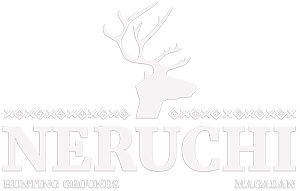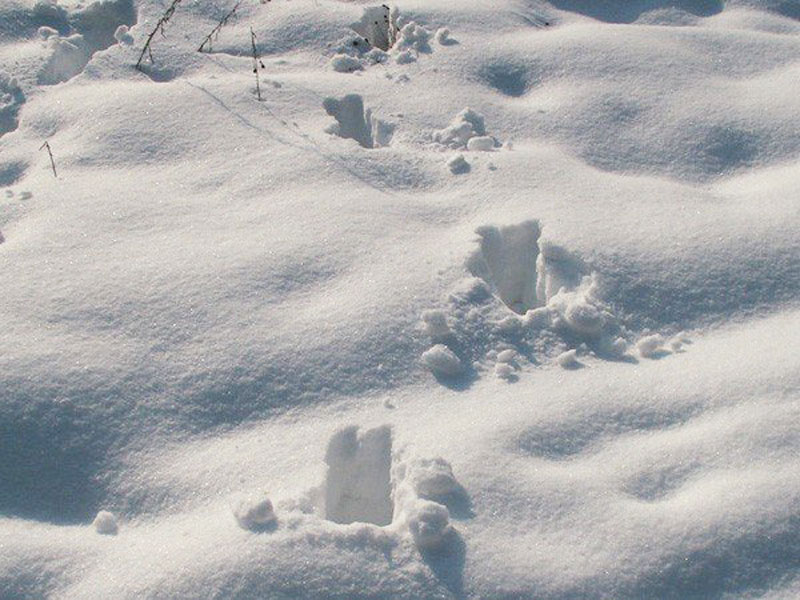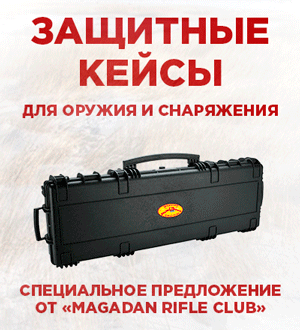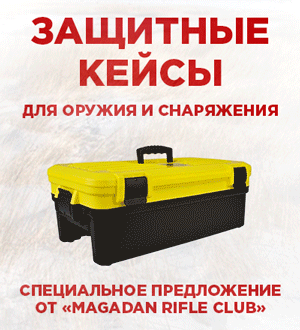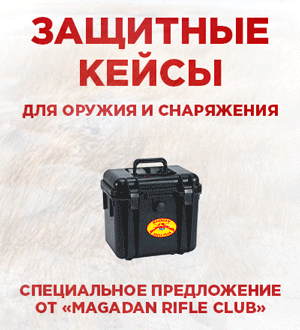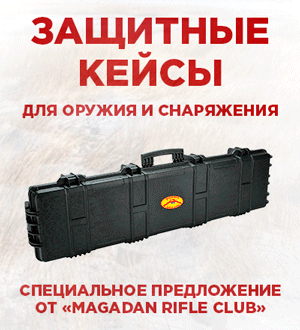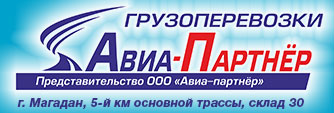Posted on February 13, 2017
Winter trace
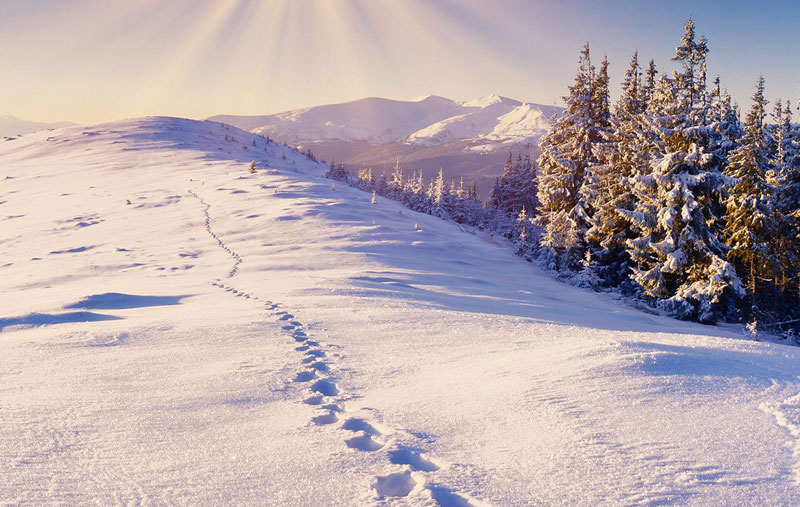
In winter hunting skill to determine the freshness of traces in the snow is an important skill. Of course, it is often concern the huntsman, but even in professional organizations, there are craftsmen shabby hunters on empty pens, giving the old traces of freshness, do not forget at the end of the day an invoice for huntsman service.
To avoid becoming a victim of unscrupulous or incompetent organizers hunt games, it is desirable to know how to determine the freshness of the trace, because the business is not only useful but also very exciting.
Moose and deer are the midnight lifestyle. Exception – cold days, when the animal may begin to fatten before sunset and lie closer to noon. Winter morning on the snow you can read more nightlife beast. If there is no snow for a long time, then every day becomes more and more traces of the hunter as important past, the most recent trace, going to the maturation of the beast. To understand the extent of traces of freshness – no easy matter. Ability to understand them is given a long practice and, to a large extent, is the result of personal abilities of observation and hunter. Here we need – the subtle vision, a keen sense of touch and the ability to make the right conclusions.
On the way will look like this affects not only the state of the snow, its moisture content, the depth, but also the impact on him of the wind, temperature and other weather conditions that affect the appearance and strength (hardness) of the following, which are the basis for the determination of trace of freshness.
Under the trace in the broad sense refers to the change that leaves the animal not only on the snow but also on the grass, the trees and all those things to which it touches. Thus, the trace left by the beast are: maturation, scratches (on the ground, snow, trees, ETC.), marks left by the horns on various subjects, parts of carcasses prints in the snow, the internal discharge, bleeding, dumped extraneous items like with the torso of the beast (sprays of water, a grain of sand, earth, pine needles and OE), and with touches of subjects, such as snow and frost from the branches, fallen trees, hedges and TD, scree needles, bark, lichen moss, dead wood, grass seed and trees, dead wood floors or young shoots, the loss of hair on the branches, mowing the shot …
But more often the word “trace” – imprints left by the feet of the beast.
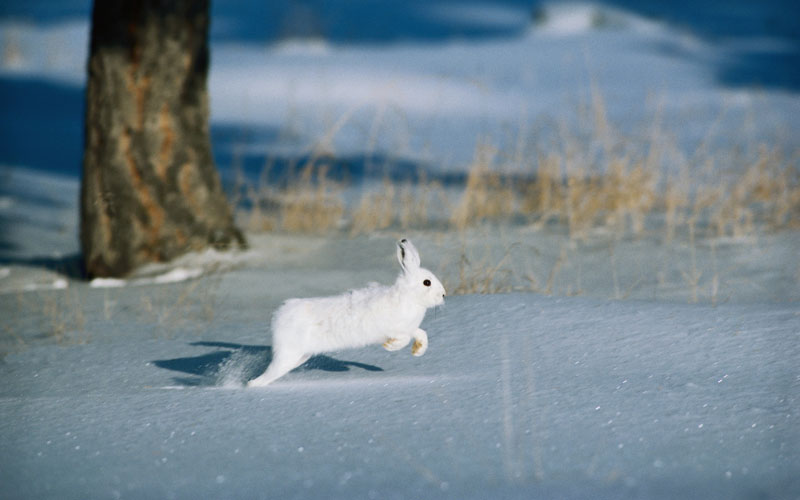
Dragged and dragged
Speaking about the trace and the definition of its freshness, not to mention the dragged and dragged as a part of the trace in deep snow. Taking out a foot (hoof) of trace pits and holding up her next step, elk drags from the pits of the snow plows snow surface in the direction of its travel, as well as lifting the legs is done gradually (especially on a normal gait or step), then the snow It is characteristic of the way out of the pit as long as the foot does not rise above the snow surface. The bar (tray) from the wall outlet when the trace pits loose snow is often wider than the pit itself, and then usually tapers, turning into a dash.
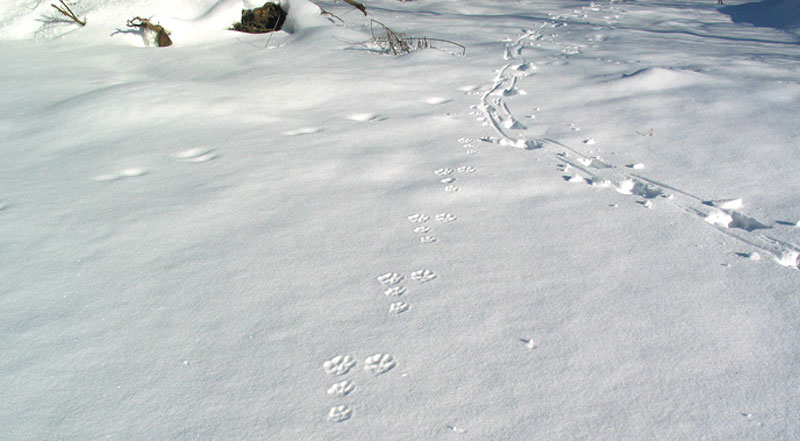
The deepening, starting from the front of the pits and the track continued in the form of features as long as it ends or begins to merge with the traits of decline legs, descending to the next step, called dragged. Dragged, however, is not a feature which may not be at the shallow snow or cautious during the beast, but also part of the front wall of the trace pits, the edges of which a few broken instep, with scree stuck out and stir up snow.
Approximately halfway between steps foot begins to decrease gradually before set foot in the snow for the step completion, and leaves on the snow line, called languishing. Dragged begins thin line, sometimes a continuation dragged and expanded, introducing themselves, while lowering his feet in the snow bandwidth of the hoof.
Dragged and dragged sometimes connected, sometimes remains a gap between them. The descent into the pit trace dragged often much more gentle than the rise of the trace from the pit dragged. Dragged indicates the direction of travel ragged breaks the snow surface at the exit of the pits and scree vyvolochennogo snow. This feature is especially valuable in a snowstorm and loose snow. Wild boar on a shallow snow leaves a trace, like elk, and in deep snowdrifts hit “trench”, defining for the hunter the direction of its travel emissions fresh snow on the edges krosheva “ditch-track” in the direction of motion as if dragged.
Trace and snow
On the definition of a trace of freshness affects the state of the snow cover. Snow can be different: moist, light and moist, moved thaw and frozen, then thaw and rain crust, loose, the frozen, crystal face down with frost, granular, drop down to the change in the weather in the form of grits, with a mixture of soft snow, packed winds and melted from the sun, cold, then to the extent of crust, not counting the intermediate species. Various shades of white snow depend on the light, and the sun can be said to be always good assistant hunter-ranger, but it has the ability of young sometimes the old, well-preserved footprints.
The easiest way to understand the trace after the newly-fallen snow, fresh snow, close the old traces. Newly-fallen snow is called “long” when the snow was over long before the morning (or the night before), and “short” if the snow has stopped shortly before dawn. Traces after the newly-fallen snow does not require the determination of their freshness.
If sometimes during the “long” in the newly-fallen snow doubt trace of freshness, it is much more difficult is the determination of trace freshness without the newly-fallen snow! Meanwhile, the definition of fresh tracks is the key to success in the winter zverovoy hunting. Knowledge in this case come with experience, we need constant monitoring over the tracks laid on the diverse quality and depth of the snow, in different weather conditions in different atmospheres; should not be forgotten, and the impact of lighting on the exterior footprint.
It is extremely useful in the evening, and do not be lazy, and at night go out and in the open and sheltered place to lay some tracks and, in addition, on the snow surface to draw a word, any slightest change in the definition of letters will be easier to be perceived. When viewed from the morning and left traces of words, it will be much easier to determine the effect of weather on the night tracks.
At the newly-fallen snow, even a weak or “long”, the case most of the situation is quite clear, but the hunter can not be expected of one of the dead newly-fallen snow, it is necessary to acquire the ability to detect trace freshness and without newly-fallen snow, since its absence does not exclude the possibility to distinguish between fresh traces from yesterday or older.
Natural phenomena, allowing exactly when, and in some cases with a certain probability, to determine trace freshness, are: a thaw following the thaw, frost, frost effect on stir up snow particles (hardening of the track), a slight snowfall, grits, frost, snow scree in the woods, a significant change in temperature and drifts.
Next thaw printed clearly with details as to the wet clay with a white shade. The frost is like the imprint of a dry trace on soft ground. Next, padded thaw affected by the action of frost, ice and similar, maintaining clear print, the print loses details and contracts. Next in the frost affected by thaw ledenely, dull, with a bluish tinge. In a small and very soft thaw frosty weather front and on the sides of the trace of snow thrown crumbs, roll in the snow puffy form pellets. If the thaw continues and has intensified, the trace spreads and loses detail imprint, the fresh trace of a strong thaw like a fingerprint on the mud, but retains vivid details of the picture, which has already lost the last trace.
Small smooth thaw conditions create trace immutability. Frost forms a crust after the thaw, and the beast, prolamyvayas it leaves traces, which in the absence of fresh newly-fallen snow can be dated only immediately after cooling, in the days that followed the definition of a trace of freshness difficult. If crust movement on the elk, wild boar emit lower, warmer snow that freezes on the surface, and if the hash is not frozen, it will trace just past the beast.
The difference between the old trace and had just left the touch can be determined, it is possible to use its mark for comparison. The degree of hardening in cold print will indicate its freshness, but a small minus the probability of error. If the snow is slightly priporoshit old and new traces, the hunter to understand them will be a difficult and sometimes thankless job. Snow on fresh traces is delayed from the top, on the uneven edges of the dragged recently passed the beast, larger than the depth of the trace, and the old trace to align the edges of the time dragged, covered more evenly, but it shows only an experienced eye.
The weather can present various surprises, complicating the definition of fresh traces, but skill comes with experience, and even if you start traces mistakenly not quite present the trace, then justifying the saying “hunter legs feed” it will or will cross the trace just past the beast, and maturation, of which is steam or warm droppings, unmistakably indicate even a novice hunter, beast around. Well, if traces of elk or roe transitions crossed morning ski runs or tractor track, today’s morning drive the hay, there is no doubt in the fresh prints.
Source: http://www.ohotniki.ru

